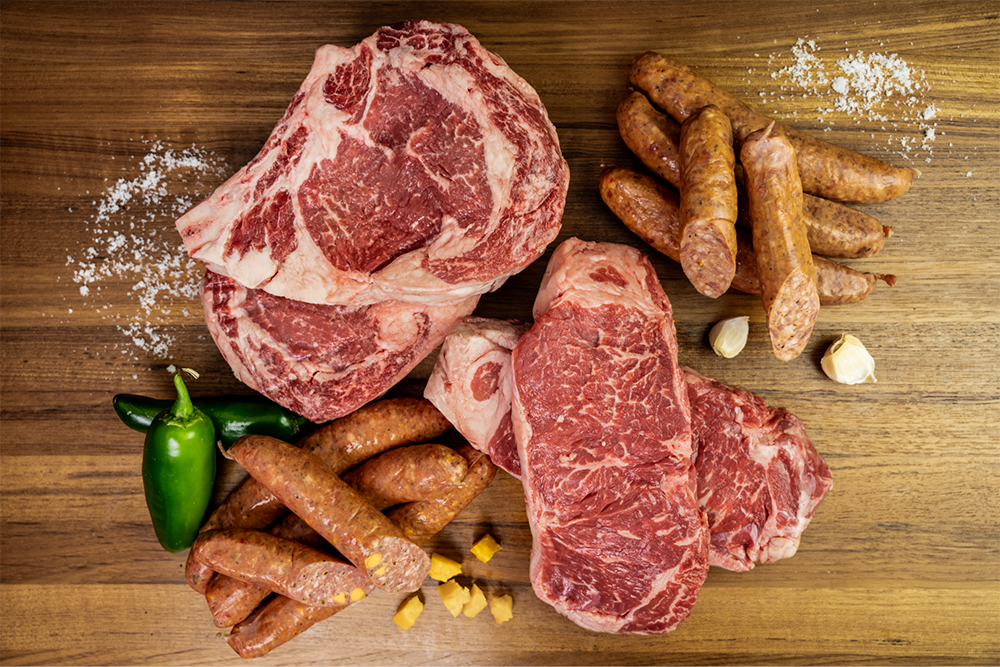Why Locals Love Bagley Farms Meat Market Edwardsville IL for Their Meat Buying
Why Locals Love Bagley Farms Meat Market Edwardsville IL for Their Meat Buying
Blog Article
Uncover the Art of the Butcher's Cut in a Modern Meat Market
In the ever-evolving landscape of contemporary meat markets, the butcher's cut has transcended its standard roots, combining old-time workmanship with contemporary methods. What really establishes the modern-day butcher apart is their capacity to forge a much deeper link in between consumers and the origins of their meat.
Evolution of Butchery Strategies
The development of butchery methods reflects an abundant tapestry of development and adaptation driven by innovations in modern technology, adjustments in consumer demand, and a much deeper understanding of meat science. Historically, butchery was a craft passed down via generations, with techniques sharpened over centuries to make best use of return and flavor. The industrial change ushered in automation, changing conventional techniques and making it possible for large-scale processing.
The mid-20th century saw butchery strategies better improved by clinical understandings right into muscle mass biology and meat aging, improving both tenderness and preference. Advancements like vacuum product packaging and refrigeration expanded item shelf-life, enabling butchers to branch out offerings and improve high quality control. This duration likewise noted the surge of specific tools, such as band saws and meat slicers, which enhanced precision and effectiveness in meat handling.

Electronic systems currently aid in monitoring pet provenance and enhancing cuts to satisfy details consumer choices. Additionally, a renewal in artisanal butchery has actually emerged, mixing typical abilities with modern-day understanding to provide to customers looking for ethical and lasting meat options.
Understanding Meat Cuts
Comprehending the complexities of meat cuts is vital for both butchers and consumers seeking top quality and value. For butchers, accurate cuts reflect skill and respect for the craft, guaranteeing marginal waste and ideal yield.

Understanding muscular tissue structure is essential; muscles used more frequently by the animal often tend to be harder and are best fit for sluggish cooking techniques, while less-used muscles, like those discovered in the loin, are a lot more tender and ideal for barbecuing or roasting. Familiarity with these differences empowers customers to make enlightened selections, boosting their cooking undertakings.
Choosing Top Quality Meat
Picking the right meat includes more than simply picking a visually appealing item from the screen. The art of selecting high quality meat calls for a critical eye and expertise of particular attributes that represent quality and excellence.
Secondly, take into consideration the marbling, which describes the white flecks of fat within the muscle mass. Appropriate marbling is a vital sign of tenderness and flavor, as it melts during cooking, boosting the meat's juiciness. Remember, higher marbling commonly correlates with their website premium quality cuts, such as USDA Prime.
Appearance is one more crucial aspect; meat needs to really feel strong to the touch, not slimed or overly soft. In addition, be conscious of the fragrance. Fresh meat needs to have a clean, neutral scent, devoid of any kind of sour or repulsive odors.
Coupling Cuts With Food Preparation Techniques

Conversely, harder cuts like brisket and chuck roast are rich in collagen, which damages down right into jelly when cooked slowly. These cuts are perfect for braising or slow-moving visit our website roasting, allowing the meat to soften in time and establish deep, complex flavors. Likewise, cuts such as short ribs and pork shoulder get on well with slow-cooking techniques, where expanded cooking times transform their durable appearances into succulent dishes.
Lamb shanks and oxtail, which require prolonged food preparation to tenderize, are excellent candidates for stewing or slow simmering. These approaches coax out rich, passionate tastes while maintaining wetness. By recognizing the one-of-a-kind characteristics of each cut, chefs and home chefs alike can elevate their culinary creations, making certain each recipe is both pleasing and unforgettable.
The Butcher's Duty Today
Navigating the developing landscape of the contemporary meat market, the butcher's duty today extends beyond mere prep work of cuts. Contemporary butchers are culinary artisans, teachers, and supporters for sustainable techniques.
In addition to crafting exact cuts, butchers now engage directly with customers, providing cooking suggestions and customizing choices to match private demands and preferences. Their experience in meat aging, marbling, and flavor profiles encourages customers to make educated decisions, enhancing their cooking experiences. This tailored service exhibits the butcher's developing role as a relied on advisor in the cooking area.
Furthermore, butchers are essential in decreasing waste, utilizing whole pets to create varied items such as sausages and supplies. This extensive technique not just respects the pet yet also straightens with contemporary sustainability goals. This way, the modern butcher embodies both practice and technology, adapting to an ever-changing market look at these guys while preserving the creativity and honesty of their craft.
Conclusion
Mastery in understanding varied meat cuts and top quality indications empowers butchers to offer enlightened recommendations, aligning details cuts with optimum cooking techniques. By recognizing historic techniques while welcoming modern demands, the butcher's role remains crucial in today's advanced meat market.
Report this page